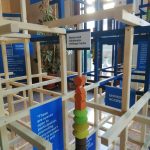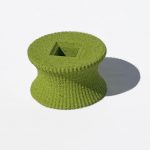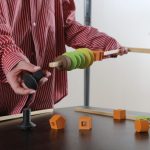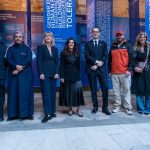Deep Surfaces.
Architecture to enhance the visitor experience of UNESCO sites
Palazzo Zorzi, Venice, (IT) 2025
UNESCO, within its partnership with the Royal Commission for AlUla, is organising an exhibition to showcase the experiences and good practices of selected visitor centres from UNESCO designated sites across the globe.
Hosted by the UNESCO Regional Bureau for Science and Culture in Europe at Palazzo Zorzi in Venice, the exhibition DEEP SURFACES will be open to the public with free admission from 10 May to 23 November 2025, in conjunction with the Venice Biennale.
The exhibition DEEP SURFACES features more than 50 architectural interventions from UNESCO-designated World Heritage sites, Biosphere Reserves, and Global Geoparks. These include newly constructed visitor centres, adaptive reuse of heritage buildings, small-scale interventions, and projects currently under development.
Deep Surfaces delves into the realm of multifunctional architecture designed to enhance the visitor experience of UNESCO sites, with a focus on visitor information and interpretation centres. Developed in collaboration with UNESCO sites worldwide, it demonstrates how architecture can connect narratives, people, and environments while safeguarding our shared heritage.
UNESCO sites—including World Heritage properties, Biosphere Reserves, and Global Geoparks—form a global network of unique places and communities. They host multiple functions, attracting visitors and fostering discovery, dialogue, and appreciation of heritage—key to UNESCO’s mission of peaceful coexistence.
Developed in close collaboration with UNESCO sites, the exhibition explores how thoughtful architectural approaches can contribute to heritage conservation, strengthen the relationship between people and place, and create inclusive, accessible, and sustainable visitor experiences. Hosted at the historic Palazzo Zorzi, UNESCO’s regional office in Italy, the exhibition highlights the role of innovative, multifunctional design in elevating the visitor experience at heritage sites around the world.
To accompany the narrative of the exhibition, designed and conceived by Giò Forma, the studio has designed a series of charms that function as a visual key, offering a clear and intuitive reading of the presented information. Each colour corresponds to a specific theme, making it easier for visitors to navigate the content—ranging from conservation efforts and public engagement to connections with local communities and landscapes. This symbolic language enhances accessibility and invites the public to experience the exhibition as a meaningful, coherent journey.
Exhibitors: @unesco ; @rcu_ksa
In cooperation with: @rimond_group
With the support of: @polimi – @maba.sap ; Black srl; @krilldesignmilano
Curatorial team: Matteo Rosati, @gioforma, @leilachapman_culture, @ingridmariapaoletti
Exhibit design and creative advice: @gioforma
Planning, production and installation: RIMOND; Giò Forma; @carliproduzioni
Content design: Giò Forma; @MauroBellon
Texts: UNESCO; RCU; Mauro Belloni
Graphic design: Simone Schiavone
Video production: @cromazoo
Sound design: Matteo Milani – USO




